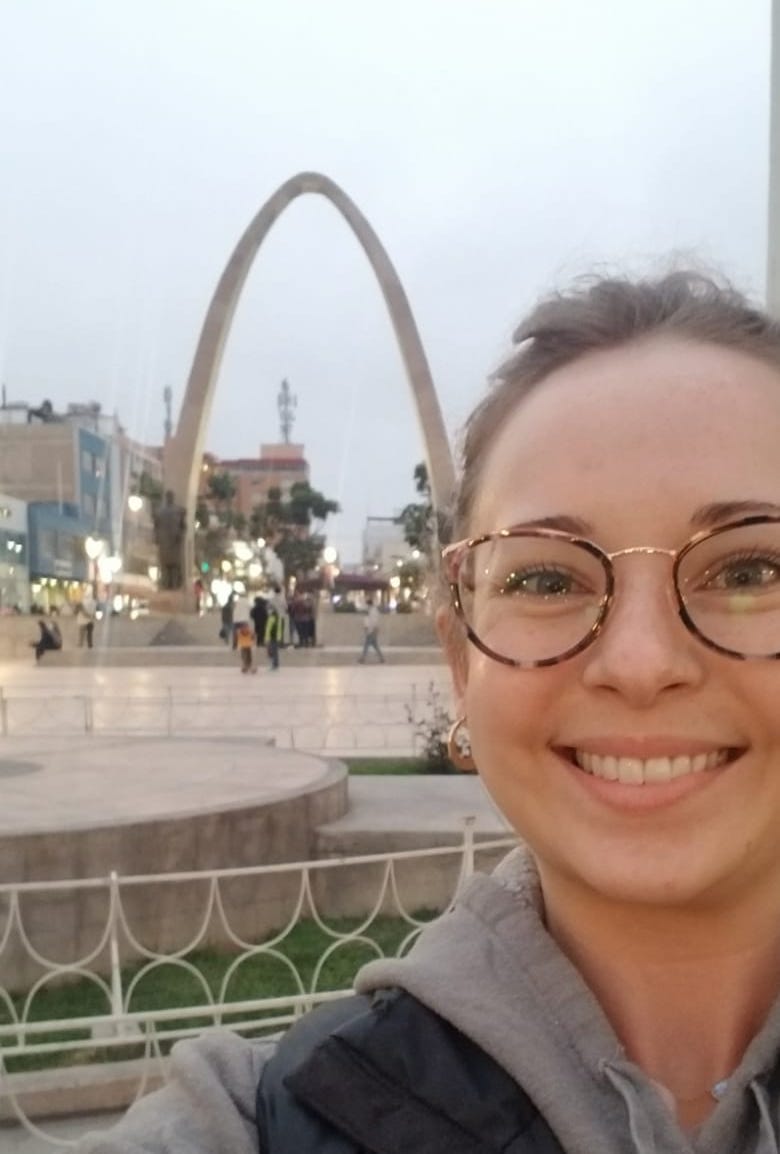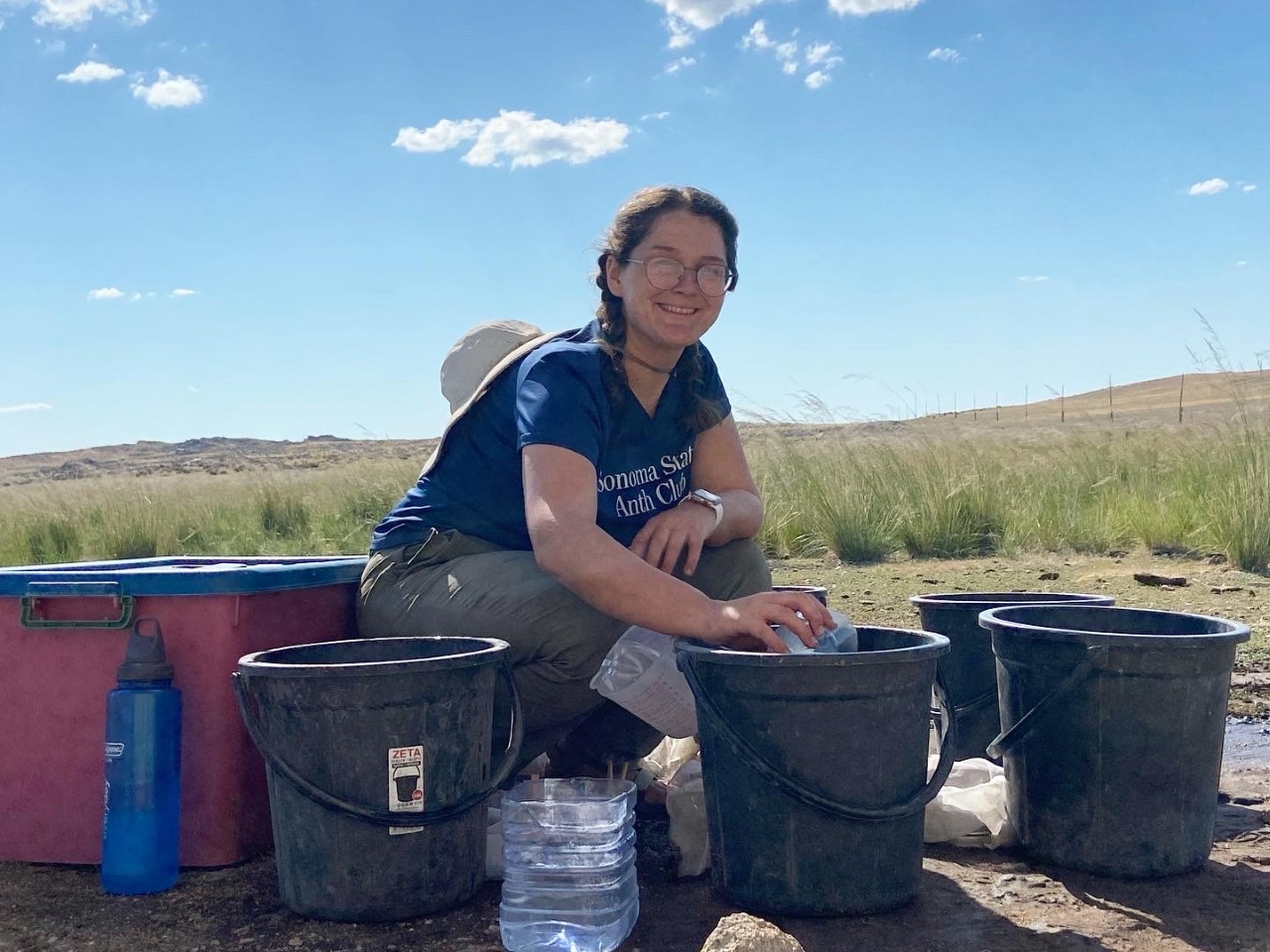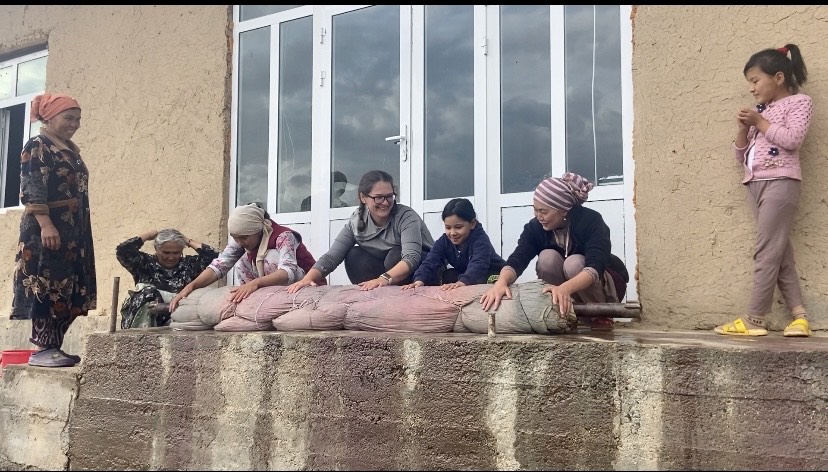After two years of delays and restrictions due to the pandemic, graduate students are once again trekking to field sites around the world for their dissertation research. Archaeologists Bridget Bey and Melissa Ritchey share their projects and perspectives.
The year 2022 has proven an exciting time for graduate students in Arts & Sciences, many of whom have had to put their research on hold for much of the past two years. As COVID restrictions loosen and borders reopen, students are returning to the field to gather the data necessary for their dissertations. Despite this forward momentum, the two-year delay has had real consequences on research trajectories, leaving some students to continue forward with significantly modified versions of their original dissertation work.

Bridget Bey, a doctoral candidate in anthropology studying Peruvian archaeology, found her passion for archaeology at the age of 6, when she first cleaned pottery shards with a toothbrush alongside her father (a Maya archaeologist) at his site in Yucatan, Mexico. At age 16 she uncovered a rare pottery platter dedicated to the Maya “fat god,” a god of feasting — a finding that made it into USA Today. The excitement solidified Bey’s resolve to become an archaeologist and run an excavation, but years later, the pandemic interrupted that path. After two years of delays, Bey abandoned her plans for an excavation-based dissertation and instead will use collections housed in Peruvian museums for her research.
Despite the shift in methods, Bey is excited with her new research question, which seeks to understand the intersection between human health and large state systems like bureaucracies and empires in the late pre-Hispanic Andes, specifically in relation to the development of puberty in adolescents. She would not have been able to pursue such a broad health question, Bey says, if confined to a single excavation site. Instead, she will gather data from 400 juvenile and young adult individuals excavated over the past 50 years in the southern Peruvian Andes from populations spanning thousands of years.
Bey starts her days early at the small apartment she rents in Moquegua, Peru, 10 minutes from the Museo Contisuyo. At the museum, Bey catalogues and analyzes the human remains and burial goods for each of the 400 individuals she is studying. In collaboration with the Museo Contisuyo, the photographs she takes as part of the cataloging process will also be used for curatorial purposes. The analyses include detailed measurements of bones and boney features that can give insight into stages of human growth, development, and health.
COVID restrictions continue to affect the research process. Bey works alone, without the help of an assistant or the company of fellow researchers, and she puts in long days to ensure she finishes collecting all the data she needs in her limited time there. She takes solace, however, in delicious takeout lunches from the many great Peruvian eateries within walking distance of the museum.
On the other side of the world, fellow doctoral candidate Melissa Ritchey is able to participate in excavation work for her dissertation, but she has transitioned to a more lab-based question to stay on track for graduating on time. Her research takes place in mountainous regions of Central Asia, where she uses excavated plant matter — both from digs she participates in and museum collections — to examine how labor choices affected Bronze-age agriculture in environments with short summers and long winters. She hopes her research will give insight into how people in the past were able to grow crops in extreme conditions and help people today know how to grow and plan agricultural food sources as the climate changes.

An average day in the field for Ritchey starts with a 45-minute commute to the dig site in Uzbekistan, where her team spends the morning carefully digging to uncover material left behind by past peoples. The researchers document and bag notable findings like ceramics, as well as the removed sediment, which is full of less obvious but important information for researchers to extract in labs. After a late lunch and little siesta, the team begins processing their findings. While ceramics are cleaned, Ritchey focuses on the bags of sediment. She uses a simple but handy technique called “floatation” to separate out organic plant matter. Floatation consists of dumping the bags of sediment into a bucket of water and letting the heavy dirt fall to the bottom, while organic matter floats to the top. The floating bits are then collected and organized to be transferred to a lab for analysis.

Zooming in at midnight from her hotel room — a moment of rare internet connectivity as she travels to her next site in Kazakhstan— Ritchey shares some of her favorite memories from the previous month. In contrast to Peru, Uzbekistan has far more lenient COVID restrictions, so in addition to her field experience she has taken part in rich human and cultural experiences. At one point, her local hosts invited her to participate in the creation of a traditional Uzbek felted rug. She also observed the Halal butchery of a lamb (a task typically only done by men) and was even asked to hold down a leg during the process. “It was really interesting to see the very special processes they go through to respect the animal and to see where your food is coming from,” Ritchey said.
Logistics remain complicated as the pandemic drags on. Bey faced significant roadblocks on her way to the field in the form of grant money allocation and visa approvals. Similarly, Ritchey’s time in the field has been greatly limited due to visa restrictions, and she still has not been granted access to China, where many of the lab samples she needs from Tibet are housed. Despite these continued barriers, both researchers remain determined to carry on, asserting that their respective site regions are ideal places to explore their research questions.
Through their original dissertation research, graduate students like Bey and Ritchey give the lives and struggles of past peoples, who lived and persisted in tumultuous physical and political environments, a voice. The sites Ritchey studies, she explains, provides an important window to a time when crop agriculture thrived in less-than-ideal conditions. The ancient people Bey studies examine the results of many rapid governmental turnovers, offering a glimpse of life across generations transitioning between significantly different political landscapes.
For these researchers and many more in Arts & Sciences, the return to in-person field work has been both welcome and necessary. “Returning to the field means conducting research years in development and gaining insights important to my field as well as the descendent communities,” Bey said. “Without the opportunity to travel, this learning, especially collaborative international projects, would remain sidelined for years.”




